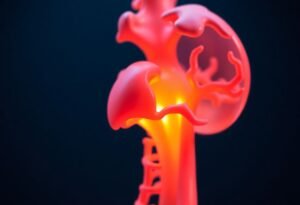The Internet of Things (IoT) is revolutionizing urban development by fostering innovative solutions that enhance infrastructure, living standards, and sustainability. Its growing implementation is reshaping cities as smart entities where technology supports connectivity and efficiency.
The Role of IoT in Smart Cities
The concept of smart cities hinges on the integration of IoT technology into urban infrastructure. This integration allows for real-time data collection, which is crucial for improving city management. For instance, smart traffic lights adapt based on traffic flow to reduce congestion. Additionally, smart waste management systems optimize collection routes, leading to cost savings and environmental benefits. Cities equipped with IoT technology present new avenues for innovation in urban planning and resource allocation. More importantly, they enhance citizens’ quality of life through improved public services.
Enhancing Public Safety
IoT has significantly improved public safety in urban areas. Through interconnected surveillance systems, cities can monitor real-time situations, enhancing response times during emergencies. For example, smart surveillance cameras can detect unusual behaviors and alert law enforcement. Fire detection systems equipped with IoT sensors can rapidly identify smoke or fire, ensuring timely responses. These advancements enable cities to create safer environments where residents can feel secure, thus fostering community engagement and growth.
Boosting Energy Efficiency
Energy efficiency is another critical area influenced by IoT. Cities can deploy IoT devices to monitor energy consumption across various sectors, which helps to identify inefficiencies. Smart meters, for instance, allow residents and businesses to track their electricity usage in real-time, promoting lower energy consumption. Through smart grids, cities can manage energy distribution more effectively, reducing wastage and costs. This optimization not only supports sustainability goals but also secures a more stable energy supply for urban residents.
Improving Public Transport Systems
The incorporation of IoT in public transport drastically enhances operational efficiency. Real-time tracking of buses and trains allows passengers to receive accurate arrival times, improving their commute experience. Furthermore, smart ticketing systems streamline fare collection, reducing congestion at transit stations. By analyzing transit data, cities can better understand commuter trends and optimize routes and schedules. These improvements make public transport more appealing and accessible, encouraging public transport use and reducing traffic congestion.
Encouraging Sustainable Practices
IoT technologies promote sustainability within urban settings by encouraging efficient resource management. For instance, IoT sensors can monitor water levels in reservoirs and detect leaks in pipeline systems, conserving vital resources. Municipalities can leverage these technologies to implement sustainable urban planning practices that minimize environmental footprints. Community gardens fitted with soil moisture sensors optimize irrigation needs without waste. By fostering such sustainable practices, cities become greener, benefitting residents and enhancing urban ecosystems.
Driving Economic Growth
The integration of IoT in urban development also stimulates economic growth. By fostering innovation through technology, cities can attract businesses focusing on smart solutions. Investment in IoT infrastructures draws startups and tech companies, further enhancing local economies. Employment opportunities arise as cities require skilled labor to manage and maintain these advanced systems. Such developments not only create jobs but also contribute to the overall economic vitality of urban areas.
Disclaimer: The information in this article is for educational purposes only and should not be considered professional advice.





















